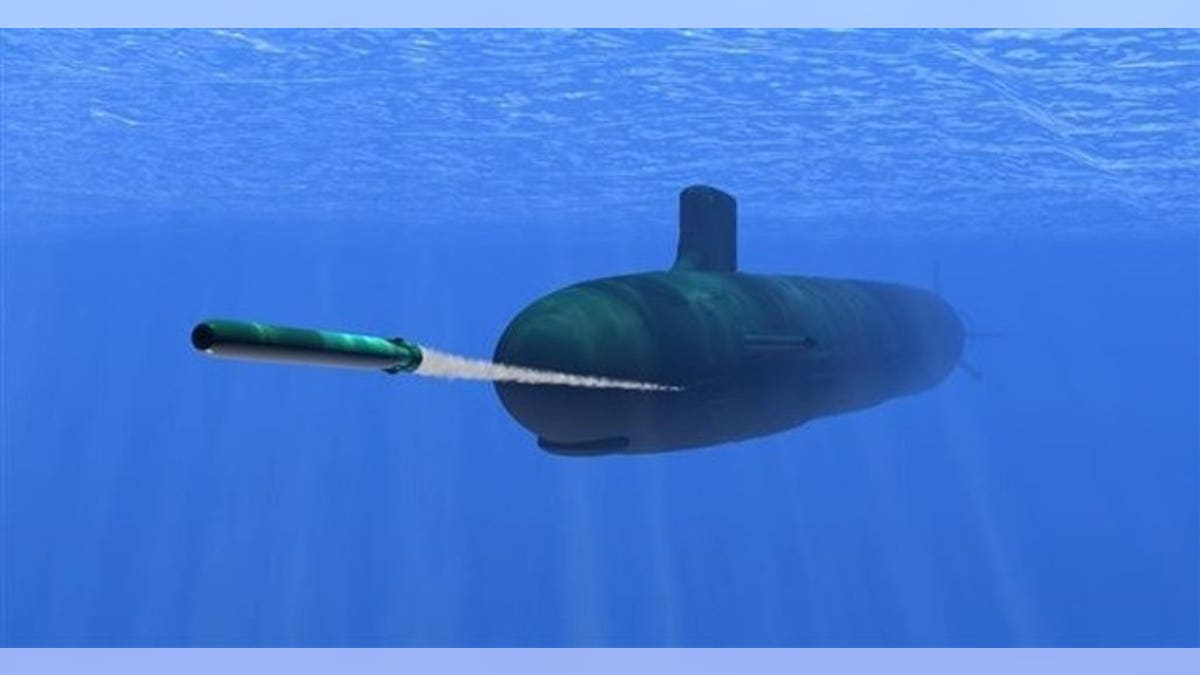
(Lockheed Martin)
Navy weapons developers are seeking a high-tech, longer range and more lethal submarine-launched heavyweight Mk 48 that can better destroy enemy ships, submarines and small boats, service officials said.
The service has issued a new solicitation to industry, asking for proposals and information related to pursuing new and upgraded Mk 48 torpedo control systems, guidance, sonar and navigational technology.
“The Mk 48 ADCAP (advanced capability) torpedo is a heavyweight acoustic-homing torpedo with sophisticated sonar, all-digital guidance and control systems, digital fusing systems and propulsion improvements,” William Couch, Naval Sea Systems Command spokesman, told Warrior Maven.
Naturally, having a functional and more high-tech lethal torpedo affords the Navy an opportunity to hit enemies more effectively and at further standoff ranges and therefore better compete with more fully emerging undersea rivals such as Russia and China.
The Mk 48 heavyweight torpedo is used by all classes of U.S. Navy submarines as their anti-submarine warfare and anti-surface warfare weapon, including the Virginia class and the future Columbia class, Couch added.
A Mk 48 torpedo is 21 inches in diameter and weighs 3,520 pounds; it can destroy targets at ranges out to five miles and travels at speeds greater than 28 knots. The weapon can operate at depths greater than 1,200 feet and fires a 650-pound high-explosive warhead, available Navy and Lockheed data states.
Navy efforts to pursue new torpedo technologies are happening alongside a concurrent effort to upgrade the existing arsenal.
For several years now, the Navy has been strengthening its developmental emphasis upon the Mk 48 as a way to address its aging arsenal. The service restarted production of the Mk 48 torpedo mod 7 in 2016.
An earlier version, the Mk 48 Mod 6, has been operational since 1997 – and the more recent Mod 7 has been in service since 2006.
Lockheed Martin has been working on upgrades to the Mk 48 torpedo Mod 6 and Mod 7 – which consist of adjustments to the guidance control box, broadband sonar acoustic receiver and amplifier components.
“The latest version of the Mk 48 ADCAP (advanced capability) is the mod 7 Common Broadband Advanced Sonar System. The Mk 48 ADCAP mod 7 CBASS torpedo is the result of a Joint Development Program with the Royal Australian Navy and achieved initial operational capability in 2006,” Couch said.
With Common Broadband Advanced Sonar System, or CBASS – electronics to go into the nose of the weapon as part of the guidance section, Lockheed and Navy developers explained.
CBASS technology provides streamlined targeting, quieter propulsion technologies and an ability to operate with improved effectiveness in both shallow and deep water. Also, the Mod 7 decreases vulnerability to enemy countermeasures and allows the torpedo to transmit and receive over a wider frequency band, Lockheed and Navy developers say.
The new technology also involves adjustments to the electronic circuitry in order to make the acoustic signals that are received from the system that allow the torpedo to better operate in its undersea environment.
Modifications to the weapon have improved the acoustic receiver, replaced the guidance-and-control hardware with updated technology, increased memory, and improved processor throughput to handle the expanded software demands required to improve torpedo performance against evolving threats, according to Navy data on the weapon.
Improved propulsion, quieting technology, targeting systems and range enhancements naturally bring a substantial tactical advantage to Navy undersea combat operations. Attack submarines are often able to operate closer to enemy targets and coastline undetected, reaching areas typically inaccessible to deeper draft surface ships. Such an improvement would also, quite possibly, enable attack submarines to better support littoral surface platforms such as the flat-bottomed Littoral Combat Ships. Working in tandem with LCS anti-submarine and surface warfare systems, attack submarines with a more capable torpedo could better identify and attack enemy targets near coastal areas and shallow water enemy locations.
A Military Analysis Network report from the Federation of American Scientists further specifies that the torpedo uses a conventional, high-explosive warhead.
“The MK 48 is propelled by a piston engine with twin, contra-rotating propellers in a pump jet or shrouded configuration. The engine uses a liquid monopropellant fuel,” the FAS analysis states.
Submarine operators are able to initially guide the torpedo toward its target as it leaves the launch tube, using a thin wire designed to establish and electronic link between the submarine and torpedo, the information says.
“This helps the torpedo avoid decoys and jamming devices that might be deployed by the target. The wire is severed and the torpedo's high-powered active/passive sonar guides the torpedo during the final attack,” FAS writes.
Earlier this year, Lockheed Martin Sippican was awarded a new deal to work on guidance and control technology on front end of the torpedo, and SAIC was awarded the contract for the afterbody and propulsion section, Couch explained.
The Mk 48, which is a heavy weapon launched under the surface, is quite different than surface launched, lightweight Mk 54 torpedoes fired from helicopters, aircraft and surface ships.
The Navy’s Mk 48 torpedo is also in service with Australia, Canada, Brazil and The Netherlands.
More Weapons and Technology - WARRIOR MAVEN (CLICK HERE)--




















